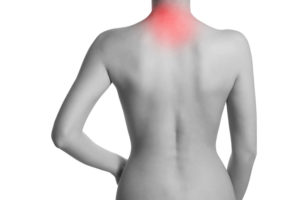
The symptoms associated with bone spurs occur when the nerves of the affected spinal section become compressed by bone. The space in between vertebra and discs is already tight, so any excess can press on a nerve root as it exits the spinal column. When compression occurs, symptoms such as the following may manifest:
- Stiffness that makes it difficult to look up or down.
- Crepitus, a sensation of grinding in a joint.
- Localized pain in the neck. This may feel like an ache or may feel like throbbing pain.
- Numbness and tingling in the tissue surrounding the neck or in the arms and hands.
- Radiating pain down the arms.
Why do some people get bone spurs?
Bone spurs are relatively uncommon in the grand scheme of health and wellness. Why do some people get them and others not? There are two common reasons why bone spurs develop, including:
- Degenerative spine disease. As we age, the bone and muscle tissue around the spinal column may deteriorate. This may be associated with primary health conditions or from normal wear and tear. Because the spine is involved in so many normal functions, it is common to see the degeneration of the cartilage that lines the facet joints of the spine. As this lining wears away, bony structures move closer to one another until, at some point, they meet. The friction that results leads to bone spurs.
- It is important to understand that injury doesn’t always occur in a sudden, traumatic fashion such as an automobile accident. Bone spurs may also develop as a response to friction or pressure that stresses a particular spinal section. The development of bone spurs after an injury may take several months or even years to present symptoms, making it a challenge to associate pain with the original injury.
Bone spurs do not go away on their own. Conservative treatments such as physical therapy and medication may improve symptoms. If needed, surgery may be performed to address the effects of bone spurs on spinal function. For more information, call our NYC office at 212-606-1004.


